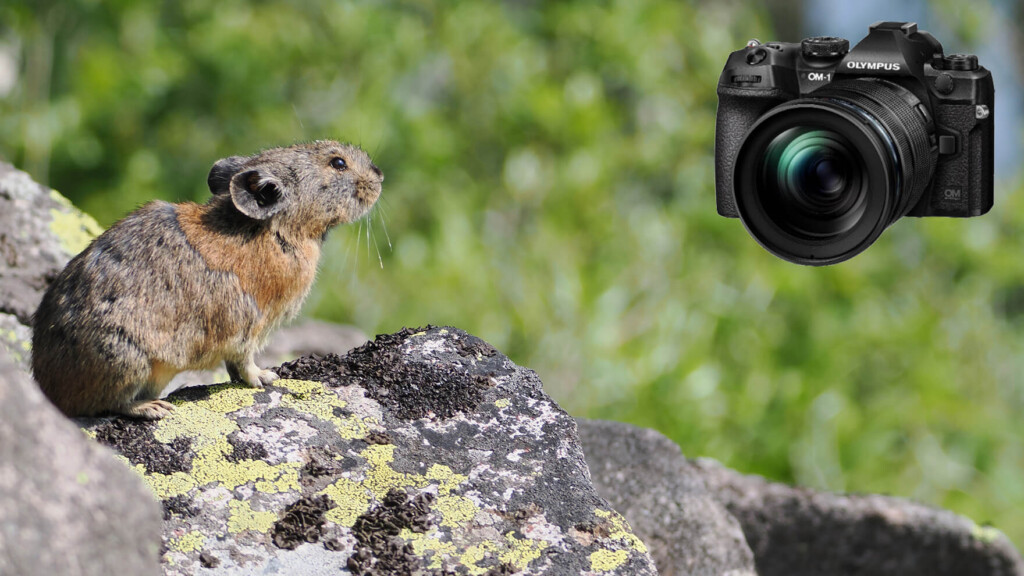
[Light and small items are absolute justice outdoors! 】I took pictures of Naki rabbits at Mt. Hakuun and Mt. Higashi Nupukausinupuri for two consecutive days with "OM SYSTEM OM-1" and "M.ZUIKO DIGITAL ED 100-400mm F5.0-6.3 IS".
I've started discord
My name is Chitose Saito, a photographer and writer. My wife and I, my soon-to-be three-year-old son, and I enjoy the outdoor lifestyle, mainly traveling in a camper van to capture Hokkaido's stunning scenery and wildlife
It's been a quarter of a century since I started using digital SLR cameras for work around 2000. Many camera concepts have changed in that time. Recently, for the first time in several years, I used the Micro Four Thirds OM System as my main equipment to climb the 1,200m-class mountains Mt. Hakuun and Higashi-Nupukaushi-Nupuri over two consecutive days, photographing the near-threatened Japanese pika on the scree slopes of each mountain. Shooting with the light, compact, and robust OM System was more comfortable than I expected, so I wanted to share my experience with you all.
table of contents
- What is the Micro Four Thirds OM SYSTEM?
- Detailed review
- I want to go see the pikas with as little luggage as possible, so I chose the OM SYSTEM OM-1
- The advantage of "lightweight equipment" was confirmed on Mt. Hakuun
- Unexpectedly fast intelligent subject recognition: AI subject recognition AF is amazing
- The sturdy and lightweight magnesium alloy body is dustproof and waterproof to IP53 standard
- The image quality is sufficient even with Micro Four Thirds, as confirmed in the camper van
- On the second day, I was able to take photos comfortably at "Higashi Nupukaushi Nupuri" without much fatigue
- The lens system is excellent for super telephoto photography and is incredibly light and small, making it extremely easy to use
- It's inevitable that you'll want a wider-angle lens
- Summary: I was surprised to find that the Micro Four Thirds OM System is now sufficient
- OM SYSTEM "OM SYSTEM OM-1" details and purchase information
What is the Micro Four Thirds OM SYSTEM?
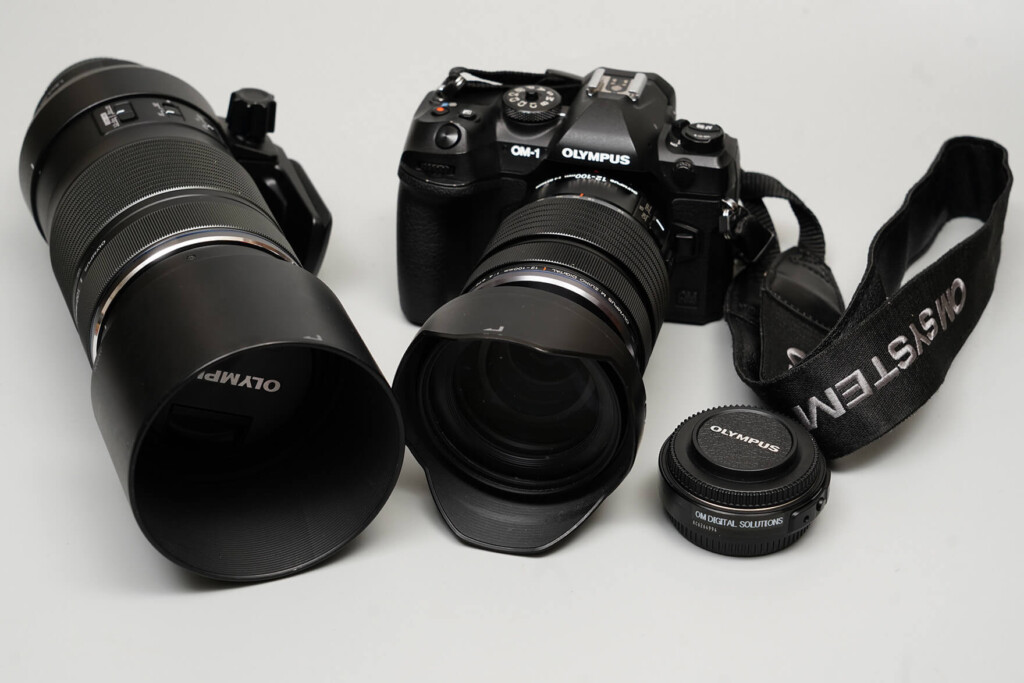
The Micro Four Thirds standard uses an image sensor that is approximately 1/4 the size of a full-frame 35mm camera. The biggest appeal is that the entire camera system is compact and lightweight
The OM SYSTEM camera system is lightweight, compact, and robust, making it ideal for outdoor use
If you've ever wanted to capture and record your outdoor activities and become interested in professional cameras, you've probably heard the terms full-frame or 35mm full-frame, which are synonymous with high-performance digital cameras. Basically, 35mm full-frame cameras use a larger sensor than most smartphones and digital cameras, measuring approximately 36 x 24mm, making it easier to achieve high resolution and offering high performance. The majority of professional cameras use this standard, making them a high-performance category among interchangeable-lens digital cameras
As someone who has made lens performance testing and reviews a life's work, I naturally use a camera system that is compatible with this 35mm full-frame format, but unfortunately it has the drawbacks of being heavy, large, and expensive. Simply put, compared to a 35mm full-frame format, the OM SYSTEM OM-1, which uses the , has an image sensor that is about 1/4 the size (area) of a 35mm full-frame standard. Micro Four Thirds image sensors are about 1/4 the size of a 35mm full-frame standard.
A larger image sensor has many positive effects on improving the very basic performance of digital cameras, such as a better S/N ratio (*), meaning better image quality, because the size of each pixel does not tend to decrease even when the number of pixels (image resolution) is increased, and less noise is produced even when the sensor sensitivity is increased. For this reason, many professional and high-end cameras use 35mm full-frame sensors with large sensor sizes, but this also has its drawbacks. Sensor size is basically an area, so it affects the sensor size by a factor of two, but because cameras and lenses must also be designed to match this size, it affects the size (volume) by a factor of three
*S/N (ratio): The ratio of signal to noise. The higher this value, the clearer the image will be, and there will be less degradation in image quality even in dark scenes
In the early days of digital cameras, larger sensors were overwhelmingly advantageous in the pursuit of higher image quality. However, while the pixel count of digital cameras was around 3 million around 25 years ago when I first bought an interchangeable lens digital SLR camera, today there are high-performance models with more than 60 million pixels, including high-pixel full-frame 35mm models, and it is not uncommon for people like me, who mainly write articles for the web, to reduce the pixel count by cropping the sensor of a 35mm full-frame camera to the smaller APS-C range
In fact, when the Micro Four Thirds standard was first released, I wondered whether the image quality would be adequate with a sensor size that is only about 1/4 the size of a full-frame 35mm camera. However, now that the image quality of digital cameras has reached a mature stage for general users, it is a camera standard that deserves attention
Among them OM SYSTEM cameras are tough models designed for outdoor use, so we thought that the OM SYSTEM would offer the toughness you need for outdoor use with minimal weight, as well as the high image quality needed for serious wildlife photography.
So this time, I went mountain climbing for two days in a row to photograph pikas using the high-end model OM SYSTEM OM-1 M.ZUIKO DIGITAL ED 100-400mm F5.0-6.3 IS which is equivalent to 800mm at the telephoto end in 35mm full-frame format but weighs just 1,120g (excluding tripod mount) the M.ZUIKO DIGITAL 1.4x Teleconverter MC-14, further enhances telephoto performance . The results were so impressive that I wanted to share them with you all.
Incidentally, due to the increasing performance of digital cameras themselves, even I, who started out taking photos as a hobby, have found it difficult to keep up with the rising prices of high-end models in recent years. While cameras for outdoor hobbies like photographing landscapes and wildlife, or for recording family photos, are in a price range that makes them difficult to recommend to friends and acquaintances, the OM SYSTEM a high-end body, the OM SYSTEM OM-1 , at around 270,000 yen, and the super telephoto zoom lens, the M.ZUIKO DIGITAL ED 100-400mm F5.0-6.3 IS , at around 170,000 yen, making them barely realistic prices, and this the OM SYSTEM camera system this time.
Recommended points
- Lightweight and compact camera system using Micro Four Thirds sensor
- Lightweight and compact, it offers a cost-effective and realistic price
- A robust camera system that is typical of the OM SYSTEM, designed with outdoor use in mind
- The small sensor makes it great for telephoto photography and is ideal for wildlife photography
- "AI Subject Recognition AF" makes focusing quick and easy, making it extremely comfortable
- The large battery provides long-lasting operation even outdoors where power is unavailable
- The image file size is easy to handle thanks to the moderate number of pixels used
Points that interest me
- Without an ultra-wide-angle lens, the wide-angle side is a bit lacking
- The OM SYSTEM OM-1 itself is not as small as you might think
Main Specifications and ratings
| item | OM SYSTEM OM-1 |
|---|---|
| Size | Approx. 134.8mm (W) x 91.6mm (H) x 72.7mm (D) *excluding protrusions |
| Weight | Body only: Approx. 511g |
| Effective pixel count | Approximately 20.37 million pixels |
| Dustproof and water-resistant | IP53 *Depending on the lens used |
| ISO sensitivity | 80 (LOW) to 102400 |
| Number of frames that can be taken | Standard: Approx. 520 shots / Low power consumption shooting mode: Approx. 1,100 shots |
| Usable temperature | −10℃〜+40℃ |
| Shape convenience | ★★★★☆ |
| image quality | ★★★☆☆ |
| Usability | ★★★★☆ |
| AF Performance | ★★★★☆ |
| Telephoto performance | ★★★★★ |
| Cost Performance | ★★★★★ |
| Robustness | ★★★★☆ |
Detailed review
I want to go see the pikas with as little luggage as possible, so I chose the OM SYSTEM OM-1
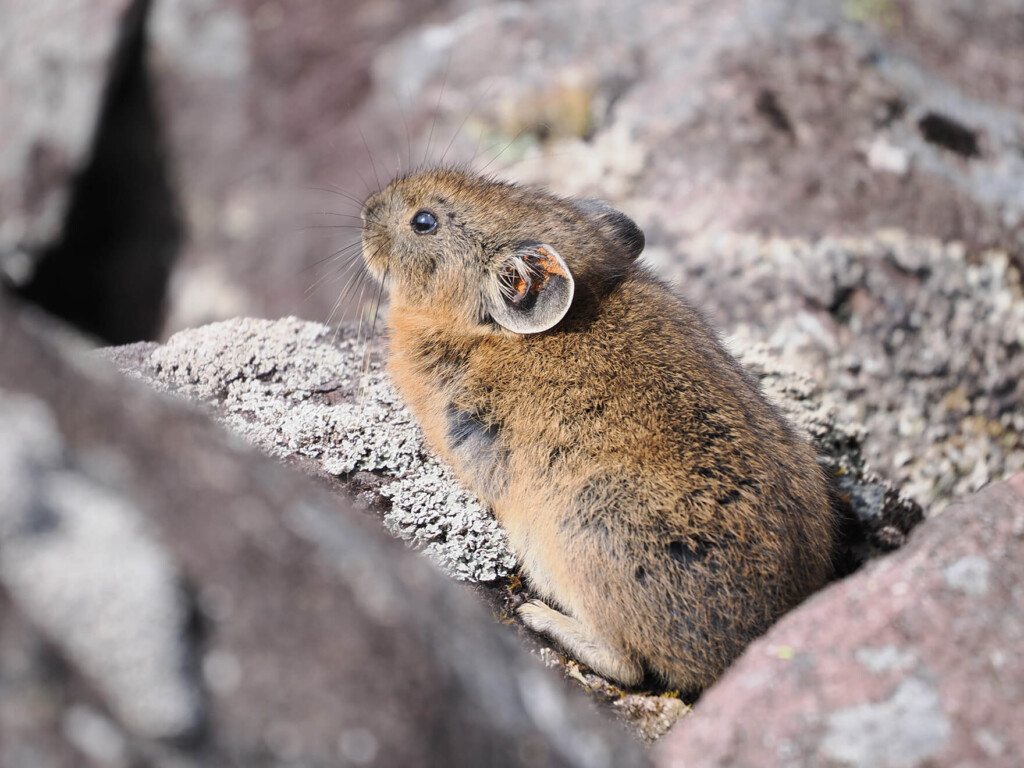
You need to use a super telephoto lens to quickly capture the pikas that occasionally appear between the rocks, so it's reassuring to have a camera with high performance that can capture moving objects clearly
"I want to photograph pikas!" When summer comes, this writer finds himself wanting to photograph pikas, one of Hokkaido's most adorable animals. Pikas are a near-threatened species that are said to have migrated to Hokkaido during the Ice Age, but were unable to return and settled in the highlands of Hokkaido. In Japan, they are only found in Hokkaido, and their correct name is "Ezo pikas." Their adorable appearance has captivated many people, and they are affectionately known by nicknames such as "Nacky."
However, to encounter pikas, which only live in cool highlands, you have to climb a mountain. Unfortunately, as a middle-aged man with little exercise, I find it quite a challenge to carry a super telephoto lens camera to photograph pikas, as well as rain gear and snacks, even if it's just a day trip, drinking water to stay for a while in the scree area where pikas live at the top, cold weather gear just in case, and a portable toilet. If possible, I would like to lighten my load as much as possible and make the climb easier
However, as mentioned in this article, a minimum level of quality sufficient for commercial use is required, and just capturing a fast-moving pika means I can't compromise on fast focusing or super telephoto photography. After considering all of these factors, I chose the OM SYSTEM 's high-end body, the OM SYSTEM OM-1 , along with the M.ZUIKO DIGITAL ED 100-400mm F5.0-6.3 IS and M.ZUIKO DIGITAL 1.4x Teleconverter MC-14 .
brought the M.ZUIKO DIGITAL ED 12-100mm F4.0 IS PRO as a standard lens for photographing mountain climbing, etc.
Now, the total weight is,
- OM SYSTEM OM-1 (approx. 511g)
- M.ZUIKO DIGITAL ED 100-400mm F5.0-6.3 IS (approx. 1,120g *excluding tripod mount)
- M.ZUIKO DIGITAL 1.4x Teleconverter MC-14 (approx. 105g)
- M.ZUIKO DIGITAL ED 12-100mm F4.0 IS PRO (approx. 561g)
The total weight of the above is 2,297g
By the way, the main telephoto zoom lens (150-600mm class) that I normally use on my 35mm full-frame camera weighs over 2kg just for the lens alone. In other words, the camera body + super telephoto zoom + standard zoom + teleconverter together weighs roughly the same as a single super telephoto zoom lens. What's more, the lens volume seems to be essentially half that. It has the advantage of being overwhelmingly small and light
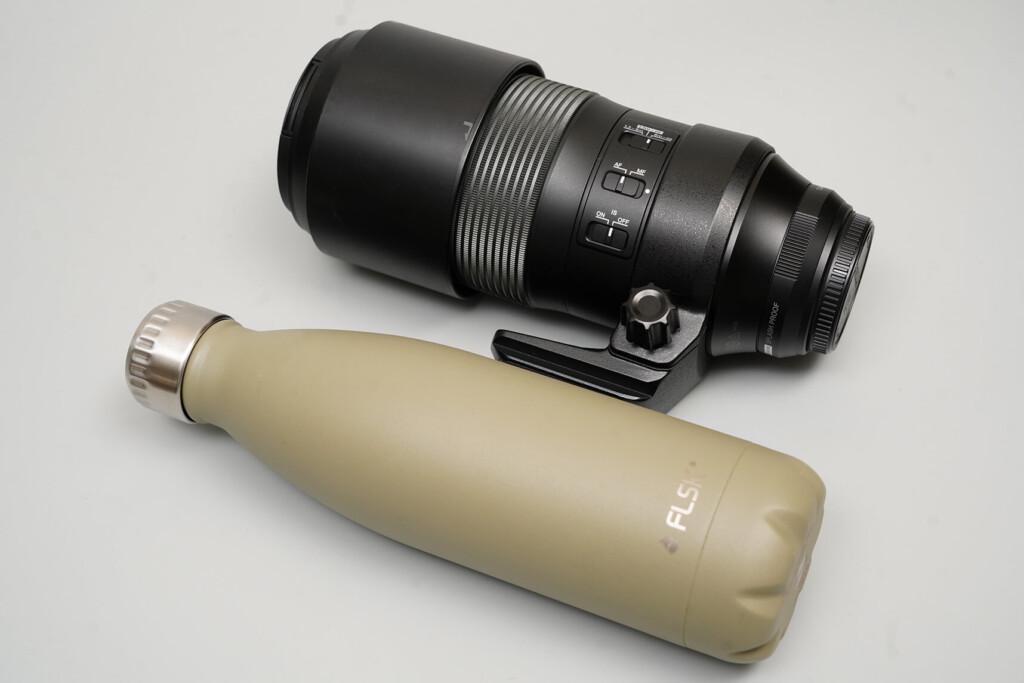
The M.ZUIKO DIGITAL ED 100-400mm F5.0-6.3 IS, which has a telephoto end equivalent of 800mm, is shown next to a 500ml stainless steel thermos flask. This highlights the compactness of this super telephoto lens
The advantage of "lightweight equipment" was confirmed on Mt. Hakuun
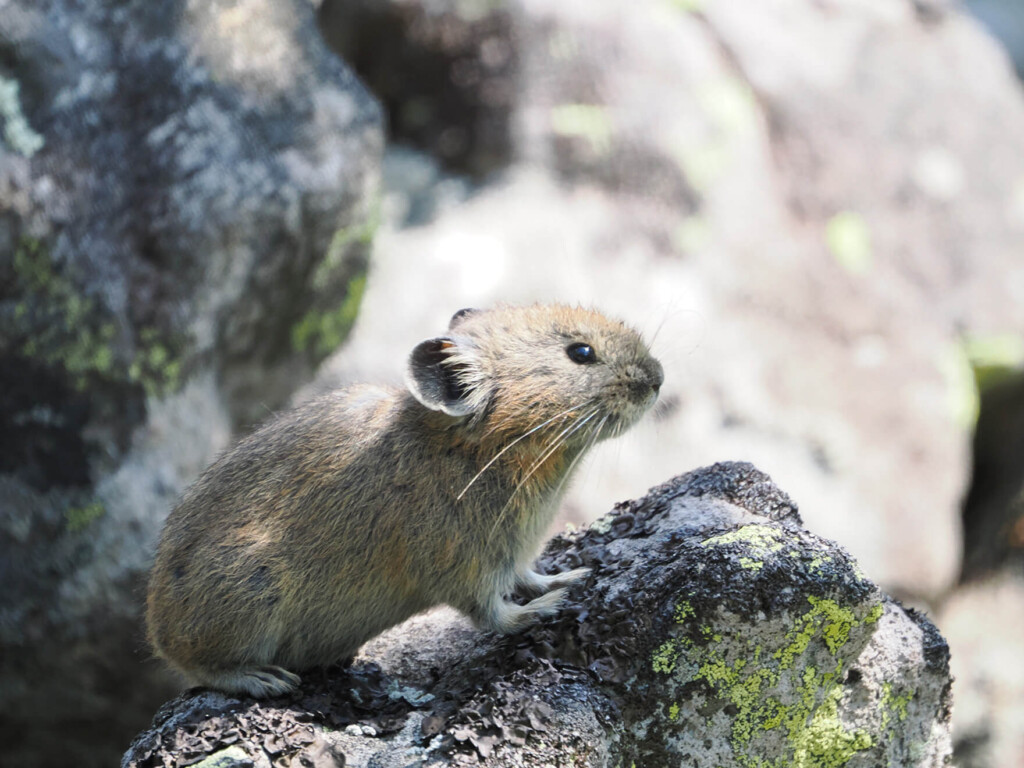
This photo shows a young individual that was born just this year. It may look like a casual photo, but the ISO sensitivity was raised to 2000 due to the high-speed shutter
Hokkaido accounts for approximately 24% of Japan's land area. Even though it's within the prefecture, the Daisetsuzan mountain range where the pikas live is quite far from my home city of Chitose. The one-way trip takes about two and a half hours using the toll road, or three and a half hours if you travel slowly on regular roads. A round trip takes five to seven hours. Since I was going out, I wanted to capture a certain amount of photos in one go. So, with the Micro Four Thirds OM SYSTEM, my luggage became much lighter. I stayed in a camper van and photographed pikas on Mount Hakuun in the Daisetsuzan mountain range on the first day, and on the scree slopes (the rugged rocky areas where pikas live) at Higashi-Nupukaushi-Nupuri on the second day. I set a fairly tight schedule and went ahead with it
Recently, there have been many sightings of brown bears in Hokkaido, so I try to avoid hiking at sunrise and dusk, the so-called "kawatare" and "twilight" times, and so even if I hike early in the morning, I arrive at the trailhead of Mt. Hakuun just after 7:00. From there, I head to the scree field near the summit where pikas often appear. The climb takes about an hour or so. There is a toilet at the trailhead, but there are no toilets on the trail or near the summit, so if you plan to stay on the scree field for a while to photograph pikas, be sure to remember to bring a portable toilet with you
By the way, the backpack containing the complete Micro Four Thirds OM System is about half the size . It's not exactly half the weight, but it's significantly lighter, making the climb much easier. I arrived at the scree slope about 15 minutes earlier than last time.

It is recommended to keep a portable toilet on hand as it can be useful in emergencies. The photo shows Captain Stag's "Portable Toilet Sukkiri-san."
Unexpectedly fast intelligent subject recognition: AI subject recognition AF is amazing
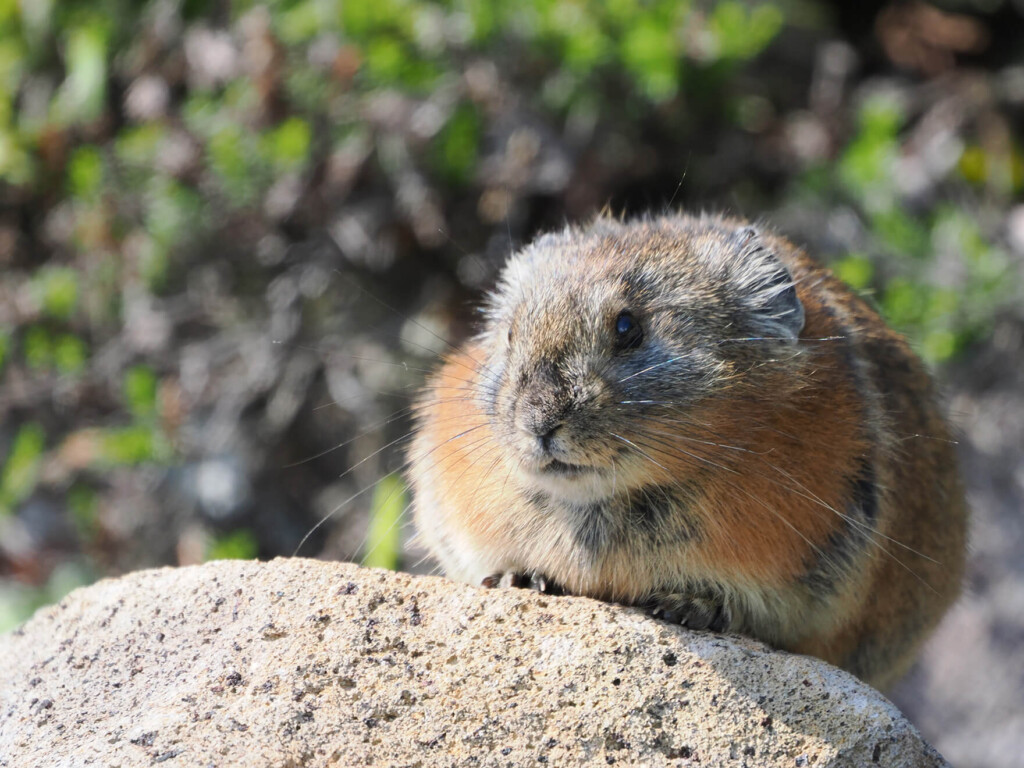
Photographing pikas, who you never know when or where they'll appear, is incredibly convenient. The AI Subject Recognition AF detects the eyes in the frame and keeps them in focus even when you change the framing
After enjoying the view from the scree slope near the summit of Mt. Hakuun, I started photographing pikas, and what the OM SYSTEM OM-1 was its AF performance. In fact, it's often said that the image quality of digital cameras as a whole hasn't improved in recent years, and there hasn't been any dramatic improvement in pixel count or image quality.
However, what many camera enthusiasts cite as the most dramatic evolution in digital SLR cameras over the past few years is the evolution in AF performance. The OM SYSTEM OM-1 is also equipped with AI subject recognition AF, developed using deep learning technology. the OM SYSTEM OM-1 can also track the eyes of Formula cars, motorcycles, airplanes, helicopters, trains, birds, and animals (dogs and cats) on the screen, achieving focusing that is impossible with human operation.
The performance of this subject-recognition type AF in recent cameras has already reached a level that is no longer possible for humans to keep track of, and it is dramatically effective when photographing wild animals such as pikas. It makes it much more likely to seize shutter opportunities that would have been missed with conventional cameras that do not recognize subjects. This function is now considered essential when photographing moving subjects, but because it requires complex and high-speed calculations, it tends to be more powerful in newer, more expensive cameras. The OM SYSTEM OM-1 comfortably achieves this subject-recognition type focusing with its AI Subject Recognition AF
OM SYSTEM OM-1 capable of high-speed continuous shooting at a maximum speed of approximately 120 frames per second , making it an extremely comfortable camera for capturing moving subjects such as wild animals.
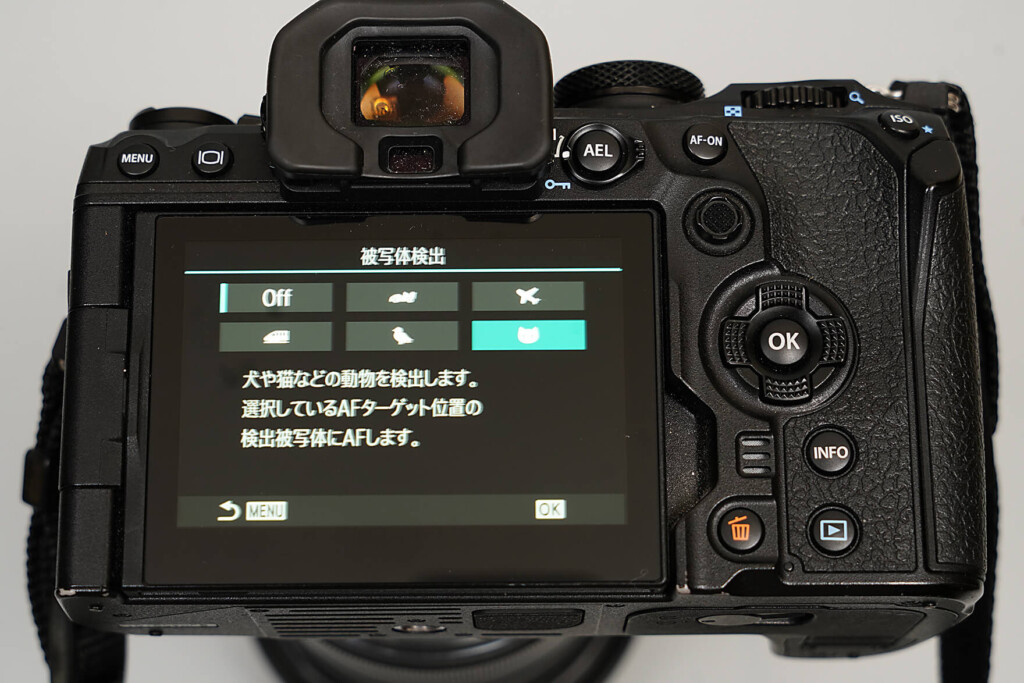
In Subject Detection AF, I selected the detection of animals such as dogs and cats. Once you use AI Subject Recognition AF, you won't want to let it go because of how convenient it is
The sturdy and lightweight magnesium alloy body is dustproof and waterproof to IP53 standard
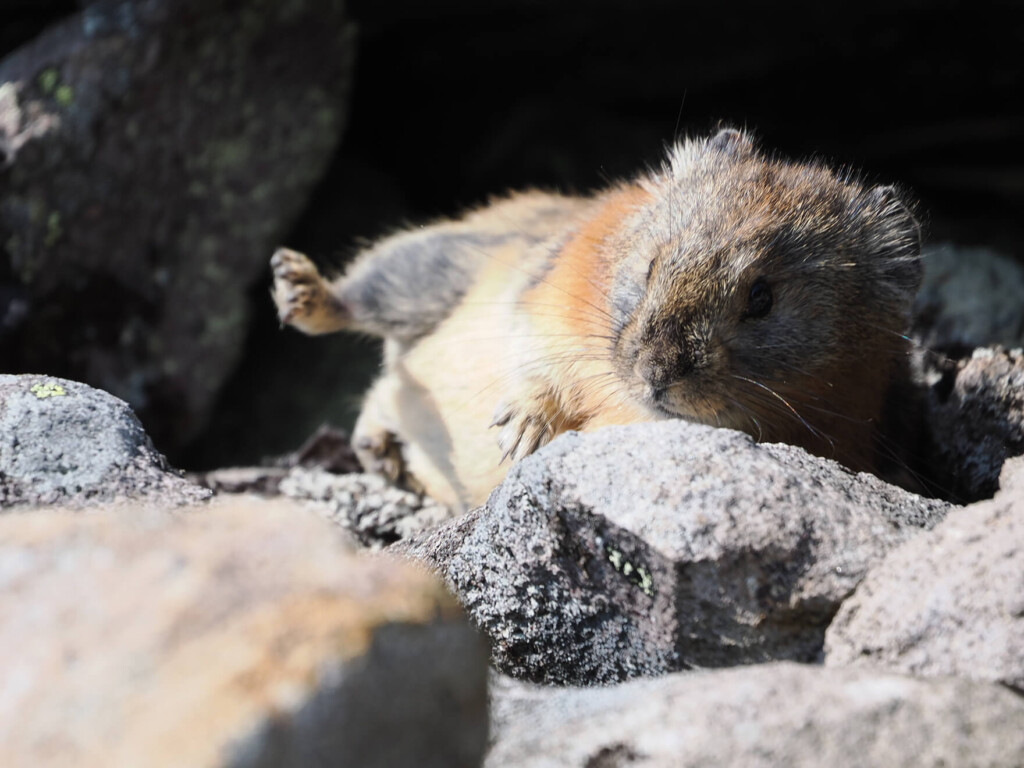
If you've made the effort to climb a mountain, you'll want to capture a variety of different scenes, which means the shooting time will be long. In such cases, a long battery life is a very welcome feature
The OM SYSTEM OM-1 uses a high-capacity lithium-ion battery called the BLX-1, which allows it to take 520 shots according to CIPA testing standards. Incidentally, when I was actually photographing pikas and other animals, I was able to shoot for more than half a day on a single battery. Thanks to this, I was able to shoot smoothly from 7am until after 4pm on my way home without having to worry about the remaining battery life.
However, in my case, I not only need to photograph pikas at the shooting location, but also the climb to get there. Naturally, there are places on the mountain trail where I have to use both hands, and I can't always completely protect the camera. As a result, my camera has many small scratches. The OM SYSTEM OM-1 is lightweight and compact, but it is a high-end professional camera. As such, the body is made of magnesium alloy and is tightly sealed, with a dustproof and waterproof rating of IP53. I can safely walk around my neck with it on a mountain trail. However, please note that it is useless unless the lens itself is dustproof and splashproof
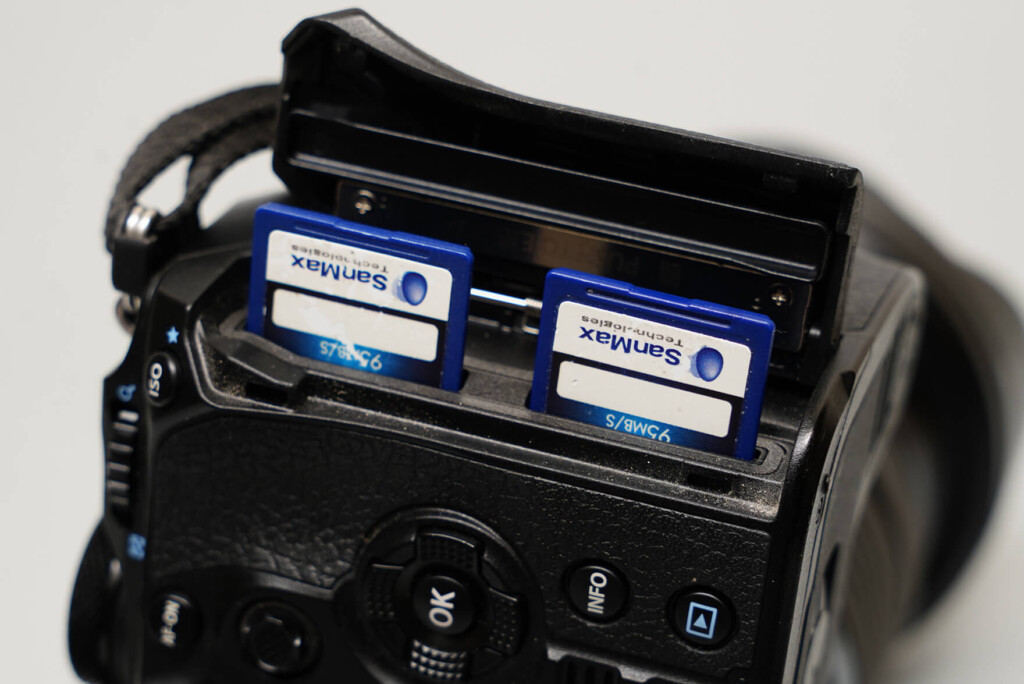
The OM SYSTEM OM-1, a high-end model for professionals, features double card slots for more reliable data backup, which is another reassuring feature
The image quality is sufficient even with Micro Four Thirds, as confirmed in the camper van
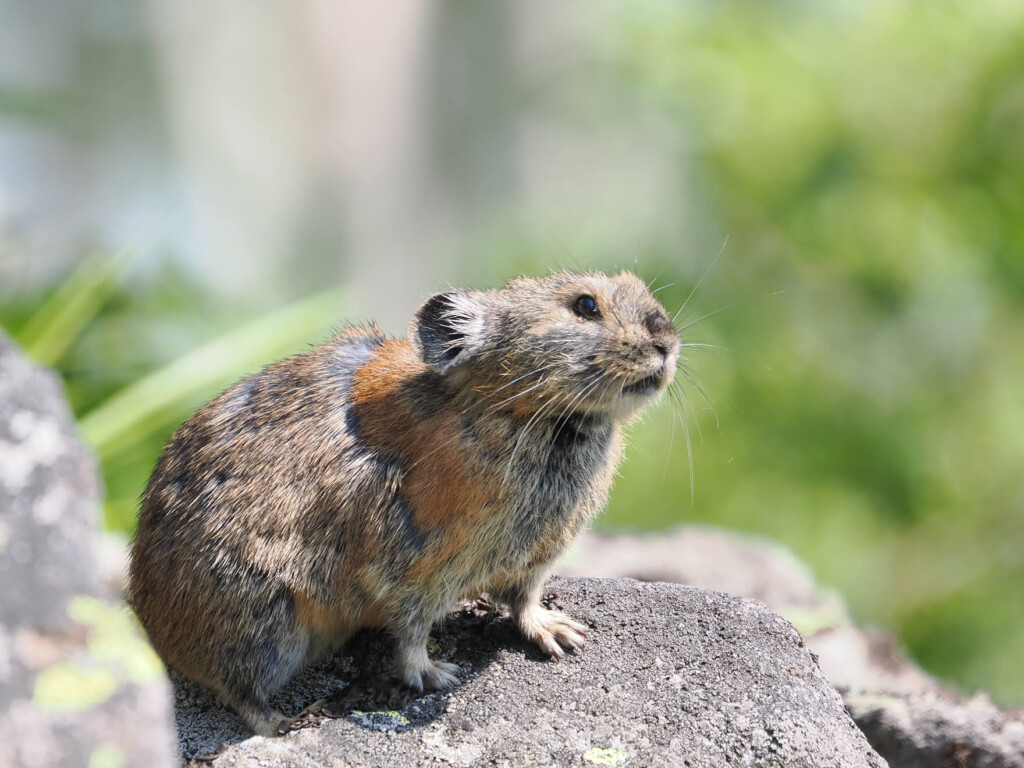
The photo was taken outdoors in the daytime, and the ISO sensitivity for the published photo was 1000. I was worried about high sensitivity noise, but it's hardly noticeable at the size used on the web
The 35mm full-frame camera I regularly use has an effective pixel count of over 40 million. In comparison, the OM SYSTEM OM-1 has an effective pixel count of approximately 20.37 million. Regarding pixel count, if we're primarily considering monitor displays for web media, an 8K monitor can display up to approximately 33 million pixels, but currently, even a typical 4K monitor only has about 8 million pixels. Once 8K image quality becomes the norm, 20.37 million pixels may not be enough. However, even the feature-length photos you're currently viewing in OUTDOOR GEARZINE are about 1,760 x 1,173 pixels (approximately 2 million pixels). Incidentally, OUTDOOR GEARZINE's image size is larger than other web media. Considering data size and other factors, it will likely be quite some time before 8K-class images can be easily handled in web media. Currently, I feel that a camera with a pixel count of 20 million pixels is generally sufficient unless you're shooting a feature film
What actually concerned me more than the pixel count was the narrow pixel pitch. In the case of the OM SYSTEM OM-1, it's about 3µm. This is equivalent to a pixel pitch of approximately 80 megapixels in a full-frame 35mm camera. I was concerned that this narrow pixel pitch would result in a large amount of noise at high ISO sensitivities. However, when I checked the actual pika data on a laptop monitor in the camper where I was staying that night, I found that there was less noise than I expected. Since photographing pikas takes place in a relatively sunny, rocky area, it might seem unlikely that a high ISO would be required. However, it's common to use a high shutter speed to prevent camera shake and subject blur with super-telephoto lenses, and so a high ISO is often required for this purpose. While there is certainly more noise at ISO sensitivities than with my usual full-frame 35mm cameras, the image quality is quite impressive when compared to high-pixel APS-C cameras
Recently, I have been doing a lot of work on web articles, and I often resize images to full HD for web media, so even at high ISO sensitivity, noise is not a problem, and I am convinced that the OM SYSTEM OM-1 is more than sufficient for work
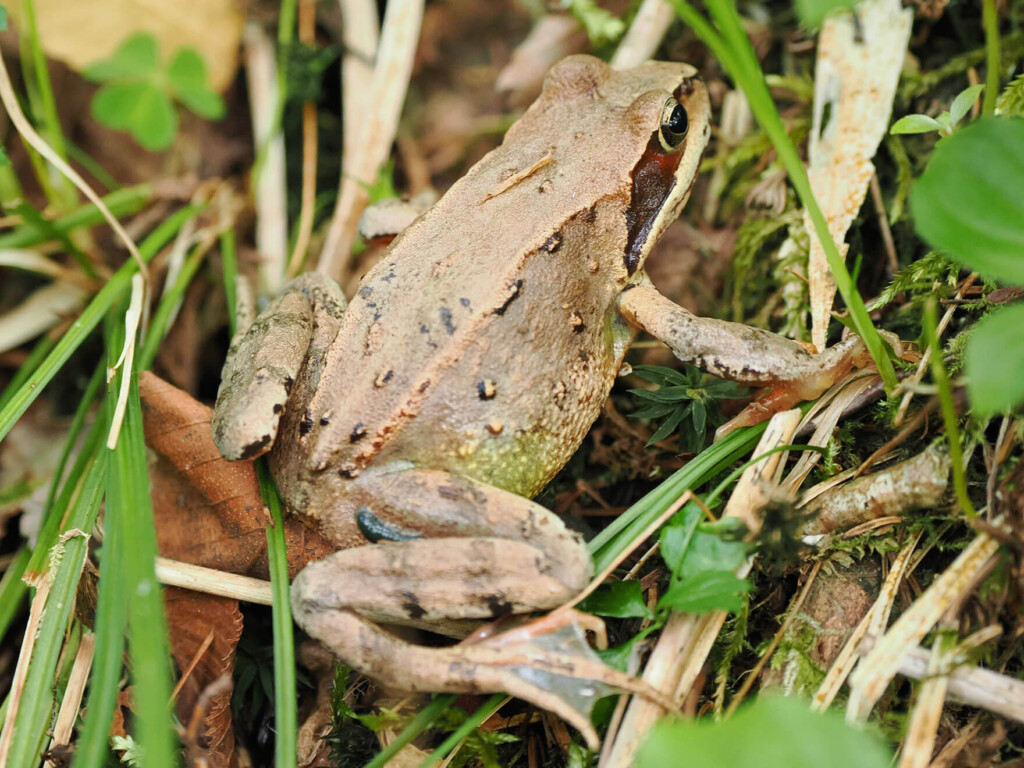
This frog was photographed on a dimly lit hiking trail while descending from Mt. Hakuun. The ISO sensitivity was 2500, but I don't think there will be any noticeable noise when using it on the web
On the second day, I was able to take photos comfortably at "Higashi Nupukaushi Nupuri" without much fatigue
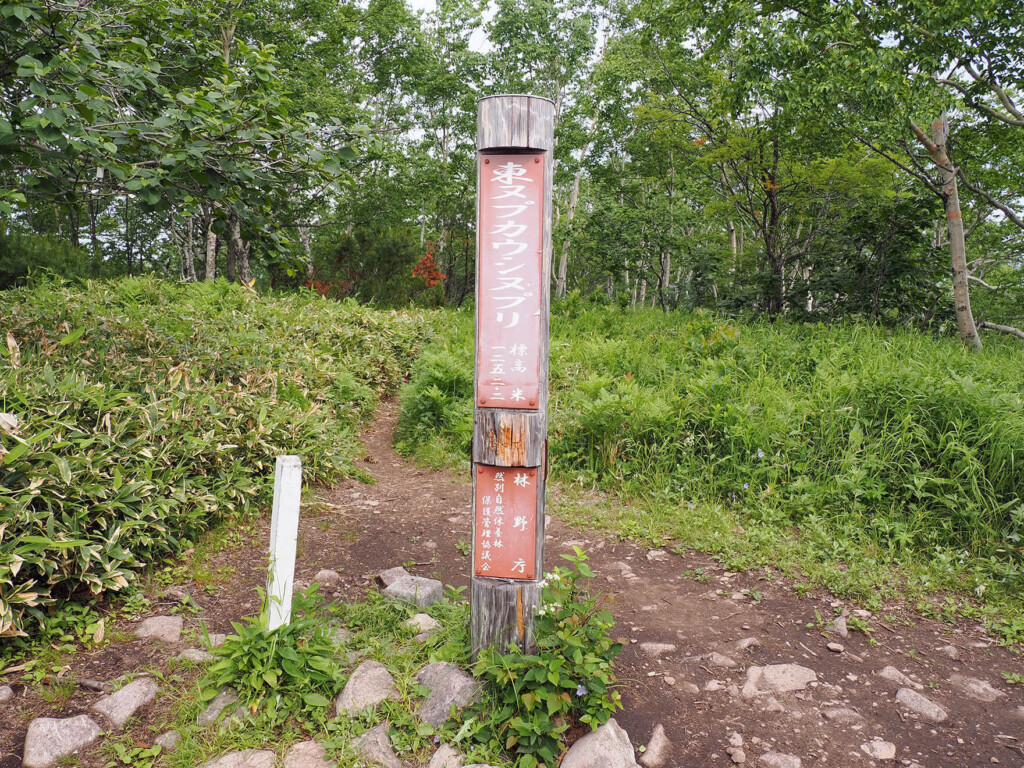
This photo was taken at the summit of Higashi-Nupukaushi-Nupuri. Most people don't go to the summit, but to the scree field beyond where the pikas are, so it seems like it's just a passing point
After a nap at a nearby roadside station, on the second day I climbed Higashi-Nupkaushi-Nupuri to photograph pikas. Higashi-Nupkaushi-Nupuri is a 1,252m-high mountain. I'd heard it would take about an hour to reach the summit and another hour and a half to reach the scree slopes further back where the pikas live the OM SYSTEM my pack was light, and I was barely tired from climbing Mt. Hakuun the day before, so I comfortably made the climb in about an hour. While it's a matter of preference, I'd recommend Mt. Hakuun if you want to enjoy the scenery while climbing, while Higashi-Nupkaushi-Nupuri is recommended if you want a higher chance of encountering pikas. Both trails are easy to follow and the climb is short, making them suitable for beginners. Of course, you'll need to be well-equipped.
Even when climbing Higashi-Nupukaushi-Nupuri, the camera equipment was much lighter than when I was using it for full-frame 35mm cameras, so the climb was very enjoyable
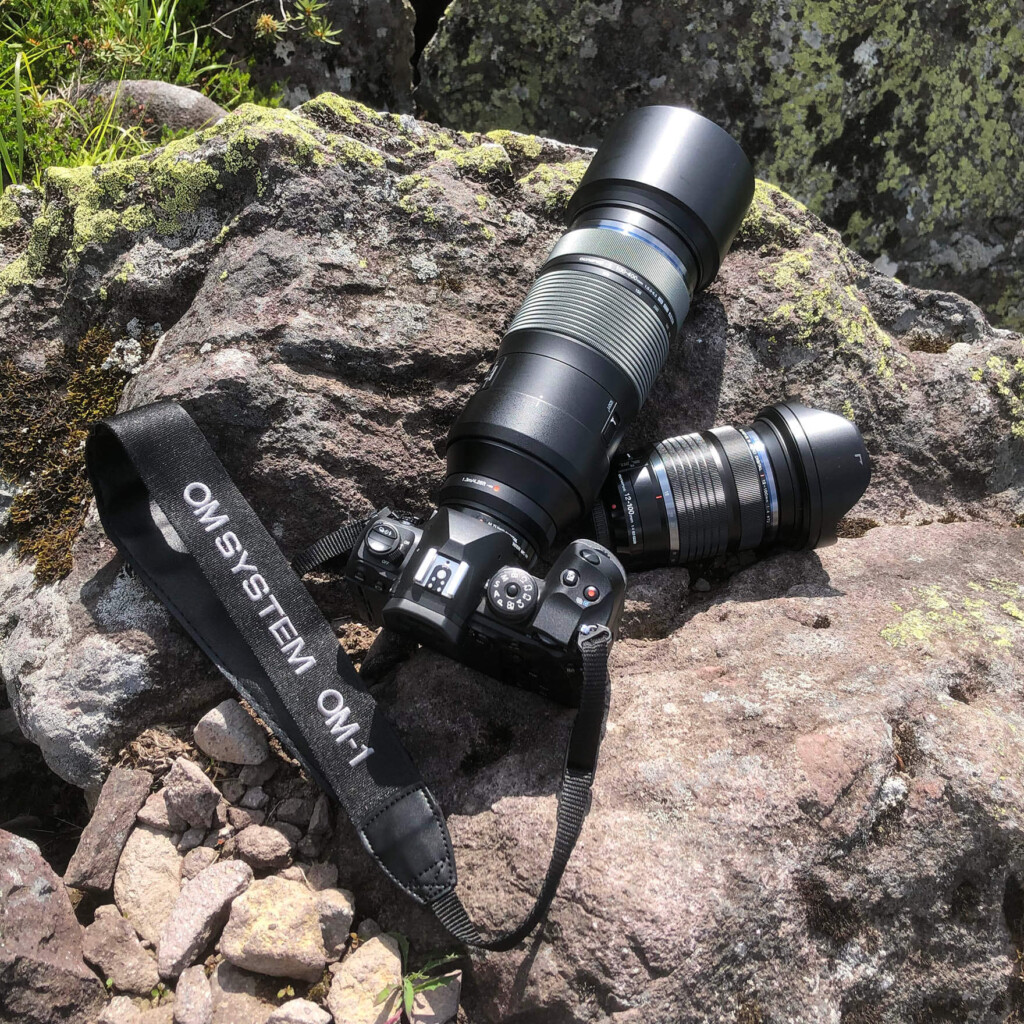
Even with the super telephoto zoom lens equivalent to 800mm at the telephoto end, a professional camera body, a 1.4x teleconverter, and a standard lens, it is very light, weighing only about 2kg, so it is very easy to use
The lens system is excellent for super telephoto photography and is incredibly light and small, making it extremely easy to use

Another benefit of the camera and lens system itself is that it is very light, making it easy to shoot handheld at a focal length equivalent to 1120mm in 35mm format using a teleconverter
When shooting with a 35mm full-frame camera system, I use a 150-600mm super telephoto zoom for wildlife photography. On the other hand, the M.ZUIKO DIGITAL ED 100-400mm F5.0-6.3 IS M.ZUIKO DIGITAL ED 100-400mm F5.0-6.3 IS capture the equivalent of a 200-800mm lens in 35mm format . What's more, it weighs approximately 1,120g (excluding tripod mount), about half the weight of a 150-600mm lens for 35mm full-frame cameras.
When shooting outdoors, simply being half the weight is a major advantage, but because the image sensor size is about 1/4, the range over which the lens forms an image is also about 1/4. This means that the lens can be made lightweight and compact while still achieving high image quality, which is another benefit. In short, it means that it is easier to design compact, lightweight, high-performance lenses. Another advantage is that because it is lightweight and compact, it is easier to keep the price down even when achieving high image quality
However, full-frame 35mm cameras have a crop function, which limits the area of the image sensor used, allowing many cameras to capture an angle of view equivalent to 1.5x with a lens of the same focal length. A 150-600mm lens allows for shooting equivalent to 225-900mm. Since I'm used to shooting at 900mm, I took the M.ZUIKO DIGITAL ED 100-400mm f/5.0-6.3 IS and the M.ZUIKO DIGITAL 1.4x Teleconverter MC-14 to photograph the pikas with the OM SYSTEM OM-1. It weighs just about 105g. This teleconverter reduces the lens's focal length by 1.4x, giving it a shooting range equivalent to 280-1,120mm, at the cost of a one-stop decrease in brightness. One of the great attractions of the OM SYSTEM is that it allows you to take super telephoto shots equivalent to 1,000mm, even though the body, super telephoto zoom lens, and teleconverter weigh less than 2kg
The OM SYSTEM body itself has a powerful image stabilization function with up to 7 stops of compensation, but the camera system is lightweight, so even those who are not physically strong or accustomed to super telephoto photography can easily enjoy shooting with super telephoto lenses, which is another major attraction of the OM SYSTEM, including the OM SYSTEM OM-1. In fact, I was surprised at how few photos were blurred with camera shake when photographing the pikas this time. Even if you are used to it, it seems that lighter equipment reduces the chance of camera shake
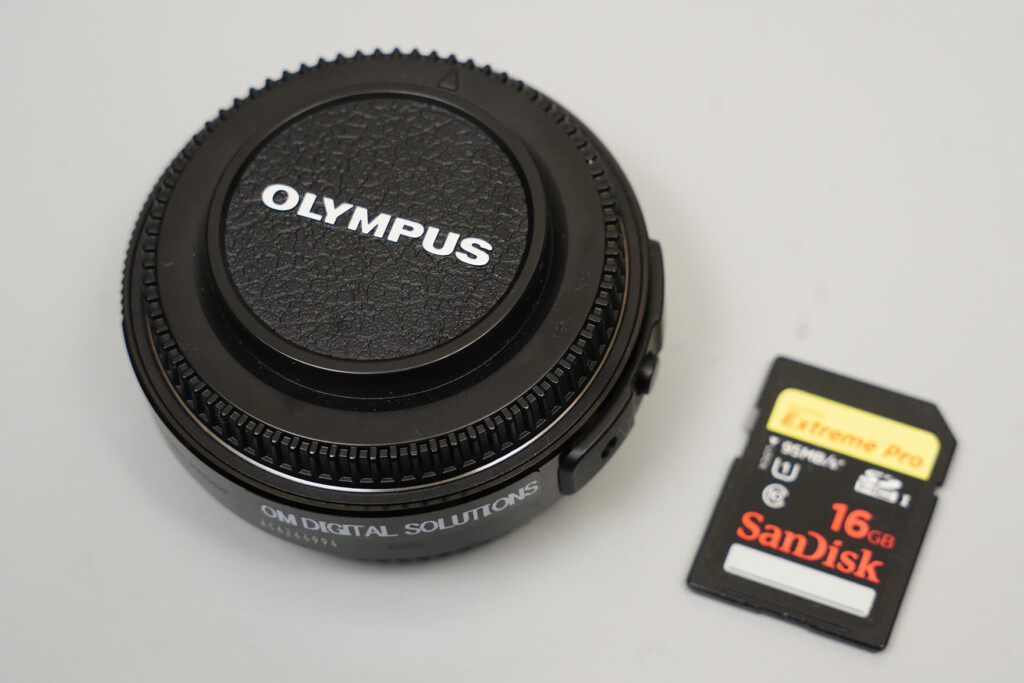
If you bring along the M.ZUIKO DIGITAL 1.4x Teleconverter MC-14, which weighs approximately 100g, you can shoot with an angle of view of over 1,100mm
It's inevitable that you'll want a wider-angle lens
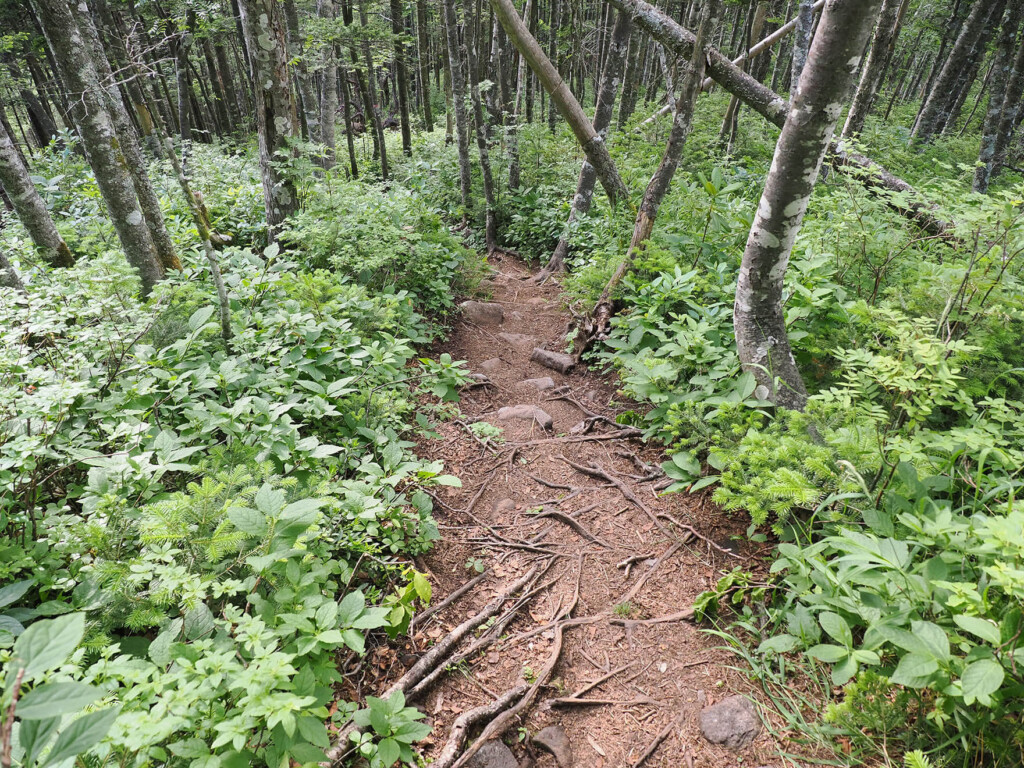
The angle of view equivalent to 24mm is by no means narrow, but when photographing mountain trails, it's true that you'll want an even wider angle
The Micro Four Thirds standard, with its small image sensor size, provides an angle of view equivalent to twice the lens's stated focal length. This is a positive feature for telephoto photography, such as photographing pikas. However, for wide-angle photography, where you want to capture a wider range, having an angle of view twice the lens's stated focal length can be a negative. However, OM System such as M.ZUIKO DIGITAL ED 12-100mm f4.0 IS PRO with me, have a wide-angle end of 12mm, which provides an angle of view equivalent to approximately 24mm in 35mm format, so the narrow angle of view of a standard lens wasn't a concern. However, there are of course situations where an ultra-wide angle is desired, and for those scenes, I found myself the M.ZUIKO DIGITAL ED 7-14mm f2.8 PRO .
M.ZUIKO DIGITAL ED 7-14mm f/2.8 PRO to this camera system, it would still weigh approximately 534g. The system's widest angle is equivalent to 14mm and its maximum telephoto is 1,120mm, so the weight of one camera body, three lenses, and one teleconverter is approximately 2,831g. Even with other accessories, this system weighs less than 3kg, and with powerful subject recognition AF, image stabilization, a rugged dustproof and waterproof body, it's lightweight, compact, and highly cost-effective, making it the perfect camera system for outdoor use.
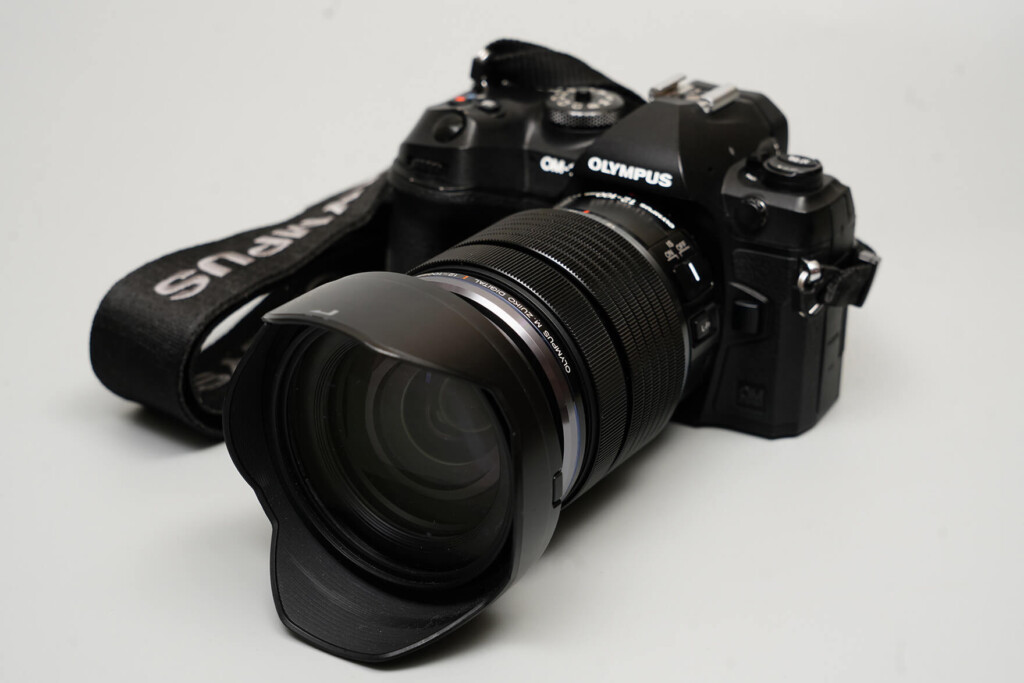
The M.ZUIKO DIGITAL ED 12-100mm F4.0 IS PRO is an extremely excellent standard lens, with a constant brightness of F4.0 and covering a range from a wide-angle equivalent of 24mm to a telephoto equivalent of 200mm
Summary: I was surprised to find that the Micro Four Thirds OM System is now sufficient
I recommend the OM SYSTEM, which has just the right size, weight, image quality, and price
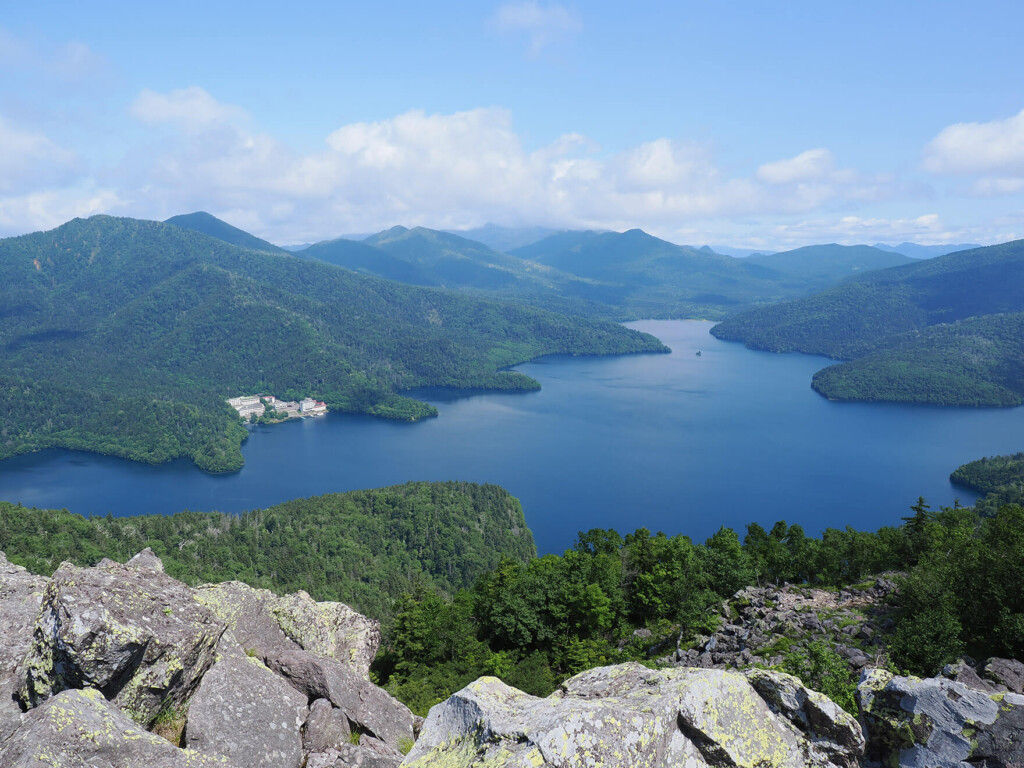
I believe that the camera you choose should depend on your priorities: whether you climb a mountain to take photos, or to enjoy the climb and take photos of the experience
As an editor of a digital camera magazine for about 25 years, I have naturally been pursuing higher performance cameras and lenses, testing a wide variety of them. I felt that while lens performance has improved in recent years, the image quality of digital cameras themselves hasn't improved much. In a sense, the digital camera market as a whole has entered a mature phase, where the market and users no longer demand higher image quality or pixel counts
So I was once again drawn to Micro Four Thirds, which uses a compact image sensor that's about 1/4 the size of a full-frame 35mm camera, and in particular the OM SYSTEM OM SYSTEM OM-1 which is positioned for professionals , and my impression after climbing a summer mountain full of pikas for two consecutive days was that everything was just right, including the current backdrop of technological advances.
The Micro Four Thirds standard has a big advantage in terms of size, weight, and dimensions due to its small image sensor, but in terms of image quality, the larger image sensor of the 35mm full-frame format is generally superior. The pixel pitch, which indicates the size of each pixel, is quite small, so even though it has 20 megapixels, I was concerned about the image quality. However, I actually used it and tested it with super telephoto at high ISO sensitivity and a high-speed shutter, and it was more than enough even for use in commercial media on the web. I feel that it is completely over-quality for casual photography or hobby photography
I also actually photographed a pika and found the OM SYSTEM OM-1 's intelligent subject recognition: AI Subject Recognition AF to be fast enough for practical use. I occasionally see reviews saying that the OM SYSTEM OM-1's AI Subject Recognition AF feels slower than other companies' high-end professional cameras in the price range where the body alone approaches 1 million yen, but it feels like it's in a different class from the OM SYSTEM OM-1 , which has a camera body price of just over 200,000 yen .
I currently the OM SYSTEM OM-1 is just right are its size, weight, pixel count, image quality, file size, AF, robustness, and other camera performance factors, but I also think that the price is a very important factor. For those who have an outdoor hobby, such as climbing a mountain and wanting to capture pikas or beautiful mountain scenery, and want to capture the action of that hobby, a camera with just the right price, size, and performance seems more suitable than one with overwhelmingly high image quality and performance. In that respect, and taking into account the technological climate of the times, I feel that the OM SYSTEM plan to focus my outdoor photography the OM SYSTEM OM-1
OM SYSTEM "OM SYSTEM OM-1" details and purchase information
For more product details, please see OM SYSTEM OM-1
Saito Titoce
 Former monthly camera magazine editor. While pursuing the spectacular views of Hokkaido and the wildlife, I was completely hooked on the outdoor life of camper vans and sleeping in my car. While traveling the entire country with his 2-year-old son and wife, he is a photographer writer who photographs and writes everything he has experienced, not only cameras and lenses, but also outdoor camping, child-rearing, PC gadgets, cooking, and dieting. OUTDOOR GEARZINE plans to write a variety of articles, focusing on the QOCL (Quality of Camping Life) Improvement Committee, which will improve the quality of life in camping and camper vans.
Former monthly camera magazine editor. While pursuing the spectacular views of Hokkaido and the wildlife, I was completely hooked on the outdoor life of camper vans and sleeping in my car. While traveling the entire country with his 2-year-old son and wife, he is a photographer writer who photographs and writes everything he has experienced, not only cameras and lenses, but also outdoor camping, child-rearing, PC gadgets, cooking, and dieting. OUTDOOR GEARZINE plans to write a variety of articles, focusing on the QOCL (Quality of Camping Life) Improvement Committee, which will improve the quality of life in camping and camper vans.





 Photo biathlon is even more comfortable with SALOMON's THUNDERCROSS GORE-TEX shoes for trail running and ADV SKIN CROSS SEASON RACE FLAG backpack.
Photo biathlon is even more comfortable with SALOMON's THUNDERCROSS GORE-TEX shoes for trail running and ADV SKIN CROSS SEASON RACE FLAG backpack. [A beautiful driving course that Hokkaido residents love! 】I took a look at the "Ororon Line" that you should remember in preparation for uneven weather conditions, with OM SYSTEM Large Three-Model Lens
[A beautiful driving course that Hokkaido residents love! 】I took a look at the "Ororon Line" that you should remember in preparation for uneven weather conditions, with OM SYSTEM Large Three-Model Lens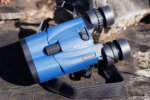 review kenko vc smart 15x42 cellarto wp
review kenko vc smart 15x42 cellarto wp [Waterproof, dustproof, shockproof] The OM SYSTEM Tough TG-7 is the perfect compact digital camera for camping, including solos.
[Waterproof, dustproof, shockproof] The OM SYSTEM Tough TG-7 is the perfect compact digital camera for camping, including solos.